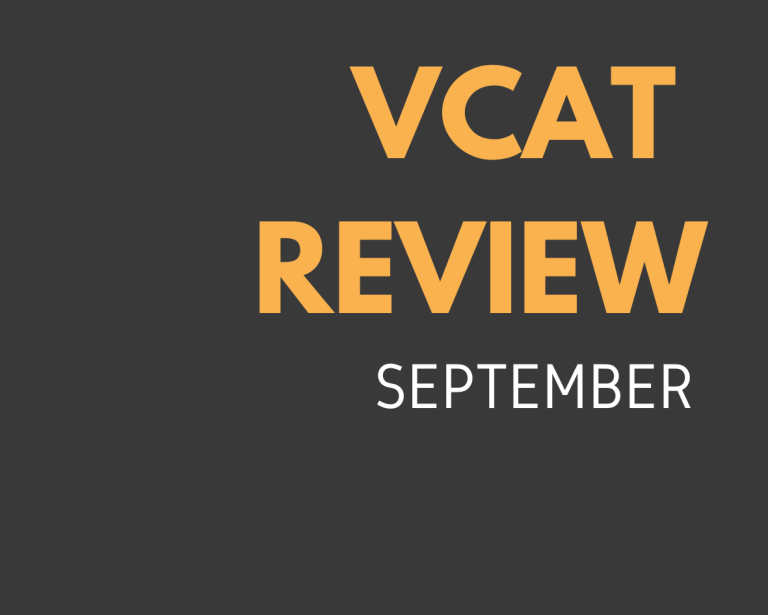An inordinate number of decisions last month appeared to involve questions of law or similar. To highlight two of the more unusual:
Little v Baw Baw SC [2022] VCAT 1080 involved a declaration application to the Tribunal under s149a as to whether the growing and processing of hemp met the criteria of ‘rural industry’. What was unusual about this was that the applicant made the application without a specific property and nominated the Minister for Planning (or DELWP in the alternative) as the responsible authority on the basis they were responsible for Clause 73.03 within planning schemes. After apparently much coaxing from the Tribunal the applicant eventually offered a property (to which they had no attachment other than it was for sale and they had made general enquiries), though continued to assert a property was not required for the Tribunal to make a declaration. To quote from the Tribunal’s decision to summarily dismiss the application:
20. The applicant also persists that no land is required to be nominated in respect of any application for declaration under section 149A of the PE Act. He says that because the declaration is sought about clause 73.03 that is, a clause that applies to all planning schemes, there is no need to specify land to which the declaration ought to attach. Accordingly, he says that the Minister for Planning (Minister) or the Department of Environment, Land, Water and Planning (DEWLP) should be the responsible authority. Although, the applicant suggests that it ought to be the Minister.
…
29. I disagree with the applicant that the ‘interpretation of the planning scheme’ need not be related to land because the phrase ‘in relation to land’ does not immediately follow the phrase ‘interpretation of the planning scheme’.
30. For ease, I set out section 149A(1)(a) of the PE Act again:
149A Application by certain persons for declarations
(1) A specified person may apply to the Tribunal for the determination of a matter if—
(a) the matter relates to the interpretation of the planning scheme or a permit in relation to land or a particular use or development of land;
…
31. The correct interpretation of this section is that the matter must relate to:
- the interpretation of the planning scheme in relation to land; or
- the interpretation of a permit in relation to land; or
- a particular use or development of land.
…
41. The applicant’s desire for an advisory opinion is made clear in the submissions set out at paragraph 20 (above) and specifically that a ‘…Declaration … will give specific focus to the process …provide an ability to utilise the declaration of the particular use as either a Section 1 or Section 2 Use within any given Council area in the state of Victoria’.
42. In the circumstances of this case, it is not the role of the Tribunal to provide an advisory opinion that can be used in any given council or by the State of Victoria.
Ilkehan v Banyule CC [2022] VCAT 1083 involved an appeal against a condition of permit requiring the plantings of three small canopy trees in lieu of three trees permitted for removal under a VPO3. Essentially the permit applicant intended to undertake replacement plantings in any case but argued that Council’s condition was inappropriate given the VPO3 only related to the removal of trees, it imposed additional burden through needing to maintain the trees and allowing Council access at will to check on the trees. In dismissing the appeal, the Tribunal found:
20. I am not persuaded by the applicant’s arguments and will affirm Council’s decision to retain Condition 2 on the planning permit. My reasons follow.
21. Firstly, I will address the applicant’s assertion that Council has no powers to issue a planning permit with this condition. In accordance with the Planning and Environment Act 1987 [4] (the ‘Act’), Banyule City Council is the Responsible Authority and has the duty to efficiently administer and enforce the Banyule Planning Scheme (the ‘Planning Scheme’). Section 62 (1) (a) of the Act states that in deciding a permit, the Responsible Authority must include conditions which the Planning Scheme requires to be included. Section 62 (2) goes on to state that the Responsible Authority may include any other condition that it thinks fit, including a condition that specifies things to be done to the satisfaction of the Responsible Authority.
22. In response to the Applicant’s concerns about the reasonableness of the condition, I note that a principle of the planning system is that conditions in a permit must fairly and reasonably relate to the permission being sought. In other words, there must be a valid connection or nexus between the two.
- I find that there is a nexus for Condition 2 to be included in the planning permit, as replanting is discussed throughout VPO3. For example, Clause 3.0 contains vegetation objectives:
- To retain and enhance the vegetation, and in particular the tall trees in the area, that contributes to the identified character of the area.
- To ensure that where a tree to be removed, comprehensive landscape plans are prepared and provision is made for substantial vegetation and trees elsewhere on the site.
- The decision guidelines also state at Clause 5.0:
- There is a comprehensive landscape plan accompanying the application which identifies the planting of substantial vegetation and replacement trees of similar ultimate size.
The decision of Nguyen v Yarra Ranges SC [2022] VCAT 1028 also raised an interesting notion when a text message was filed in support of a certificate of compliance application for a second dwelling. The text message read:
I’m pretty sure that Emily Gotch (granddaughter) was living there when we moved in, in 1998 and was there for a few years but I can’t say exactly how long she stayed there. Sure that Hannah & Joel moved in after her but whether it was straight away or time in between I can’t say for sure.
Needless to say, the Tribunal gave no weight to this text message for a number of reasons, not least of all being the declaration filed referred to a ‘Anne’ living there prior to ‘Hannah and Joel’.
As a final separate note, at 575 paragraphs over 120 pages (ignoring conditions), the decision of Longwarry Saleyards Pty Ltd v Baw Baw SC [2022] VCAT 883 must be one of the longer decisions published by the Tribunal!
Glossop Town Planning enjoyed another busy month appearing before the Tribunal either as an advocate (Hew Gerrard) or expert planning witness (John Glossop). If Glossop Town Planning could potentially be of assistance with any VCAT related matters, please contact our office on 9329 2288 or via email at mail@glossopco.com.au.


